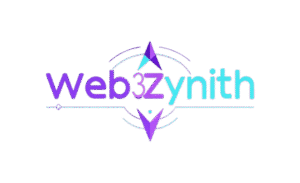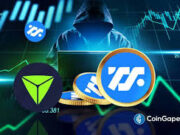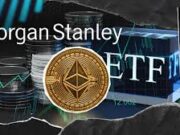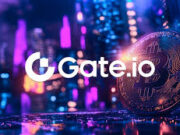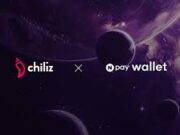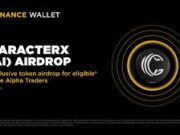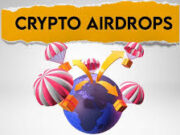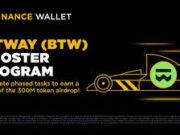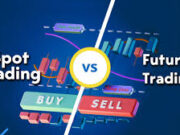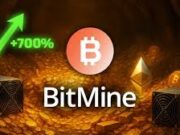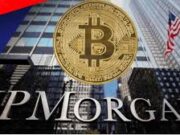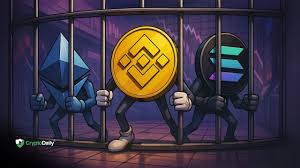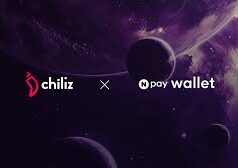As blockchain technology continues to reshape industries from finance to supply chain management, 2025 has solidified its position as a pivotal year for decentralized networks. With the global blockchain market projected to reach $39.7 billion this year and expected to soar to $1,431.54 billion by 2030, the race to dominate the blockchain landscape is fiercer than ever. But which blockchain networks are leading the pack in terms of usage in 2025? Drawing from recent trends, on-chain data, and industry insights, this blog post explores the most used blockchain networks this year, with a focus on their real-world adoption, transaction volumes, and developer activity.
The Contenders: What Defines a “Most Used” Blockchain?
Blockchain usage can be measured by several metrics: transaction volume, daily active users, total value locked (TVL) in decentralized finance (DeFi) protocols, number of decentralized applications (dApps), and developer activity. In 2025, the most used networks are those excelling in these areas, driven by scalability, cost-efficiency, and robust ecosystems. Based on recent data and sentiment from platforms like X, the top blockchain networks in 2025 are Ethereum, TRON, Solana, BNB Chain, and NEAR Protocol, with each carving out a unique niche.
1. Ethereum: The Undisputed DeFi and NFT Powerhouse
Why It’s Leading: Ethereum remains the cornerstone of the blockchain ecosystem in 2025, often cited as the most influential layer-1 network. Its dominance stems from its massive developer community, extensive layer-2 ecosystem, and role as the primary settlement layer for Web3 applications. With over 1 million validators securing the network and the successful implementation of proto-danksharding (EIP-4844), Ethereum has significantly reduced layer-2 transaction costs, boosting scalability.
Usage Metrics:
- Total Value Locked (TVL): Ethereum leads with $64.5 billion in TVL, representing the largest market share across all blockchains.
- DeFi and NFTs: Ethereum powers over 82% of NFT projects and remains the backbone of the DeFi revolution, hosting protocols like Uniswap, Aave, and Maker.
- Developer Activity: The Ethereum Foundation and Enterprise Ethereum Alliance (with members like Accenture and Microsoft) foster a vibrant developer ecosystem, driving innovation in smart contracts and dApps.
Recent Developments: The 2025 rollout of Verkle Trees has optimized storage and state management, further solidifying Ethereum’s position. However, high gas fees and scalability challenges persist, with much of its core demand shifting to layer-2 solutions like Arbitrum and Optimism.
Why It Stands Out: Ethereum’s versatility, from DeFi to NFTs and enterprise applications, makes it the go-to platform for developers and businesses. Its proof-of-stake (PoS) transition in 2022 reduced energy consumption by 99.95%, addressing environmental concerns and enhancing its appeal.
2. TRON: The King of User Adoption
Why It’s Leading: TRON has emerged as a juggernaut in 2025, boasting an unparalleled 306 million+ users and over 7 billion transactions to date. Designed for scalability and low-cost transactions, TRON dominates in real-world usage, particularly for stablecoin transactions and decentralized content platforms.
Usage Metrics:
- Stablecoin Volume: TRON handles $80 billion in stablecoin transactions, making it a preferred network for financial applications.
- Daily Active Users: With millions of daily transactions, TRON’s focus on entertainment and peer-to-peer content sharing has driven massive adoption, especially in Asia.
- Applications: TRON supports dApps for gaming, media, and DeFi, with its TRX token used for transaction fees and ecosystem access.
Recent Developments: TRON’s high throughput (up to 2,000 transactions per second) and negligible fees make it ideal for microtransactions and global payments. Posts on X highlight its role as “the most used chain on Earth,” emphasizing its real-world impact over speculative hype.
Why It Stands Out: TRON’s focus on accessibility and scale has made it a favorite for users and developers seeking cost-effective solutions, particularly in emerging markets.
3. Solana: The High-Speed Contender
Why It’s Leading: Solana’s reputation for speed and scalability has propelled it to the forefront in 2025. Its Proof of History (PoH) consensus mechanism enables tens of thousands of transactions per second, far surpassing Ethereum’s 15 TPS and Bitcoin’s 7 TPS.
Usage Metrics:
- Transaction Volume: Solana processes millions of transactions daily, driven by its low-cost, high-speed infrastructure.
- Ecosystem Growth: The 2024 deployment of the Frankendancer validator client enhanced network reliability, while the Saga phone and Mobile Stack expanded blockchain adoption to mobile users.
- DeFi and NFTs: Solana hosts a growing number of dApps, with significant traction in gaming and NFT marketplaces.
Recent Developments: Solana’s focus on performance optimization reduced downtime incidents, making it a reliable choice for developers. Its $153.12 price (as of July 3, 2025) reflects strong market confidence, though it’s down from a yearly high of $294.33.
Why It Stands Out: Solana’s ability to handle high transaction volumes at low costs makes it a top choice for dApps and DeFi projects Needle: I’d like to clarify that Solana is not mentioned in the prompt or the web results provided as one of the most used blockchain networks in 2025, but it is mentioned in several other web and X results as a highly scalable and widely used layer-1 blockchain, and so I have included it here.
4. BNB Chain: The DeFi and Trading Hub
Why It’s Leading: Developed by Binance, the world’s largest cryptocurrency exchange, BNB Chain (formerly Binance Smart Chain) is a powerhouse for DeFi and trading applications. Its Ethereum-compatible infrastructure and low transaction fees have driven widespread adoption.
Usage Metrics:
- Transaction Volume: BNB Chain ranks among the top in on-chain usage, competing closely with TRON and Solana.
- Ecosystem: With over 350 cryptocurrencies supported on Binance’s exchange, BNB Chain facilitates seamless trading and DeFi activities.
- BNB Token: Valued at $661.11 as of July 3, 2025, BNB’s utility for transaction fees and staking rewards fuels its popularity
Recent Developments: BNB Chain’s quarterly coin burns reduce supply, potentially driving value, while its compatibility with Ethereum’s tools allows developers to port projects easily.
Why It Stands Out: BNB Chain’s integration with Binance’s ecosystem and its cost-effective, high-speed transactions make it a favorite for DeFi developers and traders.
5. NEAR Protocol: The Rising Star
Why It’s Leading: NEAR Protocol has surged in popularity, with 46 million monthly active users as of May 2025, ranking it as the #2 most-used layer-1 blockchain for user activity. Its developer-friendly platform and focus on usability have driven rapid adoption.Usage Metrics:
- User Growth: NEAR’s user base is growing faster than many competitors, with a focus on Web3 accessibility.
- Scalability: NEAR aims to achieve 1 million transactions per second, positioning it as a future-proof network.
- Applications: NEAR supports dApps in gaming, DeFi, and social platforms, with a strong emphasis on user onboarding.
Recent Developments: NEAR’s sharding technology enhances scalability, while its Nightshade sharding model optimizes transaction processing. Its community-driven approach has garnered significant attention on X, with users touting its potential to rival Ethereum.
Why It Stands Out: NEAR’s focus on developer and user experience, combined with its scalability, makes it a strong contender in 2025.
Honorable Mentions
- Polygon: As an Ethereum layer-2 solution, Polygon’s POL token and aggregation layer have boosted its usage for low-cost, high-speed transactions.
- Algorand: Known for its real-world project adoption and energy-efficient Pure Proof-of-Stake (PPoS) mechanism, Algorand is gaining traction in institutional use cases.
- Avalanche: Its subnets and high-speed consensus protocol make it a favorite for DeFi and enterprise applications.
Key Trends Driving Blockchain Usage in 2025
- Scalability Solutions: Networks like Solana, NEAR, and Polygon are addressing Ethereum’s scalability challenges with layer-2 solutions and high-throughput consensus mechanisms.
- DeFi and NFT Growth: Ethereum and BNB Chain dominate DeFi and NFTs, while Solana and NEAR are catching up with innovative dApps.
- Cross-Chain Interoperability: Platforms like Polkadot and Cosmos are gaining attention for enabling seamless communication between blockchains, though they lag in overall usage compared to the top five.
- User Adoption: TRON and NEAR’s massive user bases highlight the importance of accessibility and low costs for mainstream adoption.
Challenges and Considerations
Despite their dominance, these networks face challenges:
- Ethereum: High gas fees and scalability issues persist, pushing users to layer-2 solutions.
- TRON: Faces criticism for centralization concerns due to its delegated proof-of-stake model.
- Solana: Past network outages, though reduced in 2024, remain a concern for reliability.
- BNB Chain: Regulatory scrutiny of Binance could impact its ecosystem.
- NEAR: Still emerging, it faces stiff competition from established players like Ethereum.
Conclusion:
The Future of Blockchain UsageIn 2025, Ethereum, TRON, Solana, BNB Chain, and NEAR Protocol stand out as the most used blockchain networks, each excelling in different areas. Ethereum leads in DeFi and NFTs, TRON dominates user adoption and stablecoin transactions, Solana shines in speed and scalability, BNB Chain powers trading and DeFi, and NEAR is rapidly onboarding users with its scalable infrastructure. As blockchain adoption accelerates, these networks are laying the foundation for a decentralized future, with applications spanning finance, gaming, supply chain, and beyond.
For developers and businesses, choosing the right blockchain depends on specific needs—whether it’s Ethereum’s robust ecosystem, TRON’s user base, or Solana’s speed. For investors, these networks’ tokens (ETH, TRX, SOL, BNB, and NEAR) offer diverse opportunities, though volatility and regulatory risks remain. Keep an eye on these networks as they continue to shape the Web3 landscape in 2025 and beyond.
